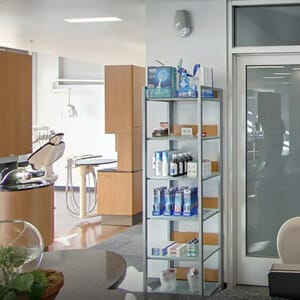Home sleep studies bring the diagnostic power of a sleep lab directly to your bedroom, offering a straightforward way to understand sleep disturbances without stepping outside your door. By equipping you with simple-to-use technology, these studies capture everything from your breathing to your brain waves as you sleep in your own bed. It’s an approach that marries convenience with accuracy, designed for anyone struggling with sleep but reluctant to spend a night in a clinical setting.
Let’s explore how home sleep studies work, revealing their role in helping you achieve a better night’s sleep.

What is a Home Sleep Study?
A home sleep study is a non-invasive examination designed to capture a comprehensive picture of a person’s sleep patterns. It involves using specialized equipment that patients can easily set up, minimizing disruption to their natural sleep routine. This approach not only facilitates the diagnosis of sleep disorders but does so in a manner that respects the patient’s comfort and convenience.
Definition and Purpose
The study serves as a powerful diagnostic tool, enabling the identification of sleep disorders without being observed. It is characterized by its non-invasive nature, relying on technology that is easy to wear and effective in gathering necessary data.
Types of Sleep Disorders It Can Diagnose
This method can diagnose a range of sleep disorders, including:
- Sleep apnea: Characterized by breathing interruptions
- Insomnia: Encompasses difficulties in falling and staying asleep
- Restless Legs Syndrome (RLS): Marked by an irresistible urge to move the legs
- Narcolepsy: Known for causing excessive daytime sleepiness and sudden sleep attacks.
Home sleep studies represent a pivotal advancement in the field of sleep treatments, offering a practical solution for those seeking to understand and improve their sleep.
The Home Sleep Study Process
A home sleep study is a significant step towards fixing your sleep patterns and regaining healthy habits. This process, designed for your convenience, seamlessly integrates into your nightly routine, allowing for a comprehensive evaluation without the need for an overnight stay in a sleep lab.
Let’s explore the journey from preparation to the actual study.
Preparing for Your Home Sleep Study
The journey begins with a thorough preparation phase to make the study as informative and effective as possible.
Initial Consultation and Evaluation
An initial evaluation lays the groundwork for a successful home sleep study. This involves an in-depth discussion about your sleep habits, challenges, and any symptoms you’ve been experiencing. Keeping a sleep diary before the study can provide valuable insights into your sleep patterns and behaviors, offering a clearer picture of what might be disrupting your sleep.
Reviewing your medical history is also crucial, as it can uncover potential factors contributing to sleep disturbances. In some cases, a physical examination may be necessary to identify any physiological signs of sleep disorders, such as indicators of sleep apnea.
The Technology Behind Home Sleep Studies
Home sleep studies leverage advanced technology to monitor your sleep in a natural setting. The SleepImage system and the ARES™ Home Sleep Test are examples of the devices used, each offering a unique way to gather essential data on your sleep health.
Overview of SleepImage and ARES™ Systems
The SleepImage system utilizes a simple device, often a ring, which you wear on your finger overnight. It pairs with a mobile app to record and analyze your sleep data.
The ARES™ Home Sleep Test, on the other hand, involves a wearable unit equipped with sensors to measure various sleep parameters. Despite their differences, both systems are designed with user comfort in mind, so wearing them does not disrupt your sleep.
Monitoring Your Sleep
These devices are meticulously engineered to capture data as you sleep, including brain activity, eye movement, heart rate, breathing patterns, oxygen levels, and body movement. This data collection is crucial in diagnosing sleep disorders.
During the Study
Setting up for the study is straightforward, with clear instructions to ensure the devices are worn correctly. For systems like SleepImage, this might include downloading an app, while the ARES™ device will have specific guidelines for fitting the wearable sensors.
Once you fall asleep, the devices work silently throughout the night, tracking and recording every aspect of your sleep. This includes not just the quantity of your sleep but the quality, providing a detailed overview of your sleep stages, any disturbances, and potential signs of sleep disorders.

After the Home Sleep Study: Next Steps
Completing a home sleep study is just the beginning of your journey to better sleep. The crucial steps that follow—data analysis, consultation, and treatment—translate your study’s insights into actionable strategies for improved sleep health.
Understanding Your Sleep Study Results
After your study, specialists analyze the data to identify any sleep disorders. This analysis looks at sleep stages, breathing patterns, and movements throughout the night. A follow-up consultation allows you to discuss these findings, helping you understand the implications and ask any questions you may have.
Diagnosis and Tailored Treatment Plans
With a clear diagnosis, whether it’s sleep apnea, insomnia, or another condition, the focus shifts to treatment. Treatments are personalized, considering your lifestyle and specific needs, offering the most effective and manageable solutions.
Common Treatment Options
CPAP (Continuous Positive Airway Pressure) Titration: CPAP therapy is often recommended for sleep apnea sufferers. A titration study helps find the optimal air pressure for your CPAP machine.
Multiple Sleep Latency Test (MSLT): Used to diagnose conditions like narcolepsy, the MSLT measures how quickly you fall asleep in quiet situations, helping to understand and treat excessive daytime sleepiness.
Moving Forward with Treatment
The journey from diagnosis to treatment is a partnership between you and your healthcare provider, focusing on finding the right solutions to improve your sleep and overall health. Effective treatment not only addresses immediate sleep issues but also contributes to long-term well-being.
Take the First Step Towards Restoring Your Sleep
Discovering the root causes of your sleep issues and finding effective solutions starts with a home sleep study. Sleep Perfection is here to guide you through every step, from diagnosis to personalized treatment.
If you want to improve your sleep and overall health, contact us today.







